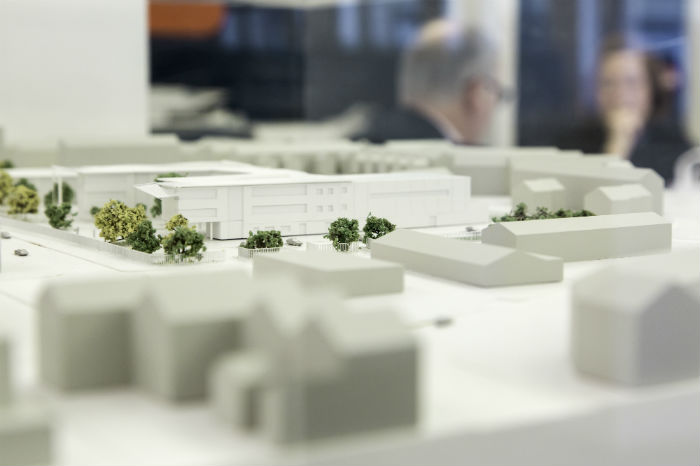Scott Brownrigg - Practice Role Model
Having an integrated business plan and taking tough decisions
Design and commercial imperatives need to be perfectly aligned, otherwise you won’t have the profit necessary to invest in your future.
Your practice ambitions can only be realised through the discipline that comes from having a fully integrated business plan. If you are worrying about money, it will inhibit every single line you draw.

Here we have the collective purpose we wanted, a common vision and a clear structure that keeps us focused on the five Ps: product; promotion; people; process and profit. Each strand of the business is led by someone from the board with the right expertise and that clarity of role and responsibility then cascades downwards.

We learned the hard way about the need for this kind of rigorous approach. When the market was overheated in the mid-2000s it was relatively easy to get a job because there was lots of work around. But in October 2008, everything dramatically changed – one of our offices alone lost 40% of its income, which required drastic action to be taken and meant losing staff at all levels. We knew it was vital to retain talent, so we cut the rose bush back in a way that would enable it to grow again.
We wanted to do more than survive – we wanted to come out of the recession considerably stronger than we went in. When the market opened up, we were already on the blocks; we weren’t still in the changing rooms thinking ‘oh I forgot my kit’. That experience taught us to get to grips with problems quickly, make the tough calls and take care of talent.
Just over 20 years ago we had fewer than 50 staff and now we are one of the top 100 practices in the world, with a very healthy balance sheet and our own property. That didn’t happen by accident, we made a profitable company because we took the necessary steps to create it.
Investing in the culture of the practice and your people
You’ve got to invest in the culture of the practice the entire time.
We make sure people are on board, communicate with them and take the time to thank them for their work.
We want architecture to be a thoroughly enjoyable process and for that attitude to be infectious. People want to be part of the practice and form strong friendships here, which all adds to the stability of the business. We intentionally strengthen that social fabric through things like a staff forum, a wellbeing committee and lots of social functions.

We view our people as our most important asset and make huge investments in staff development. Everyone here has ample opportunity to pursue their passion for architecture. There is structured succession planning, Performance Development Reviews and training that they can book themselves directly on to.
No-one has to ask, ‘What do I have to do to get on round here?’
Scott Brownrigg is a terrific career vehicle but people have to want to drive it. We want people with an appetite for success to make the most of their talent and to know that if you commit energy and effort to this place, you will get the rewards. We don’t mind if you work in hard bursts or longer steadier runs – but this is not a place for those lacking motivation or serious application.
Building an inclusive workplace and removing career obstacles
Times have changed since the days where the partners sat in their offices and you had to make an appointment to meet them. Along with many other parts of the profession, we have become much less hierarchical and more focused on attracting, retaining and developing diverse talent. 52% of our management team are female, we have 33 different nationalities working for us and a wide employee age range that starts at 21 and goes up to 72.
We put a lot of effort into making this an inclusive workplace and we give people every opportunity to realise their potential, whoever they are and wherever they come from.
We are interested in the best architects and go out of our way to find them.

We underpin that ambition with fair recruitment practices and a transparent promotion process, so that you can be confident that you will progress on merit.
We deliberately try to remove potential career obstacles. For example, we have a very positive attitude to flexible working that we know has enabled parents to stay in the business.
To our mind the word architect shouldn’t be prefaced by male or female. By necessity you should simply be a good architect.
Being a Practice Role Model means stimulating professional debate
Respect for architecture has ebbed away in the UK, fee scales are completely off balance and you see architects fighting against each other for work. We risk killing each other off, when instead we should be working together. Architecture has the potential to be truly transformational but we need to start talking about how to secure the status, investment and the resources necessary to realise that potential. We want to play an active part in stimulating that debate.
Scott Brownrigg is one of nine Practice Role Models which represent our vision of what it means to be a successful RIBA Chartered Practice. Find out more about the Practice Role Model project and the other eight practices.







